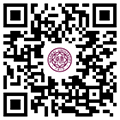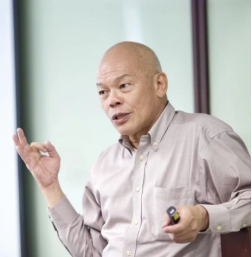

|
 English
English
讲座题目
Predictive Brain Plasticity, Choice Perception, and the Miserly Brain
报告人

周恕泓 (Soohong Chew)
报告人简介
周恕弘(Chew Soo Hong),西南财经大学“光华英才工程”首席教授,国际经济计量学会院士(会士,Fellow)。周恕弘教授是世界著名的实验经济学家和行为经济学家,曾执教于美国亚利桑那大学、约翰·霍普金斯大学、加州大学尔湾分校、香港科技大学(担任讲座教授)、新加坡国立大学。在Econometrica, Journal of Political Economics, Journal of Economic Theory等世界级学术期刊上发表上百篇论文,h指数39,i10指数72,2011年他当选为国际经济计量学会(Econometric Society)的院士(Fellow),是这一世界上最著名的经济学协会自1933年创建以来的第11位华人院士。
讲座介绍
主讲人将介绍他与合作者基于认知科学研究最新搭建的不确定性和风险条件下,决策选项如何在决策者的注意力和记忆过程的影响下,被感知和编码的神经生物模型。
Predictive Brain Plasticity, Choice Perception, and the Miserly Brain
Chew Soo Hong and Richard Ebstein
The realization that the human brain is dynamic and constantly changing arises from the seminal work of (Hebb, 1949) which posits how synaptic connections between neurons change over time based on their correlated activity with the insightful phrase about neuronal firing – “fire together, wire together”. This Hebbian ‘learning’, reflecting the brain's ability to change and adapt based on prior experiences, has led to the predictive brain plasticity hypothesis (Halvagal and Zenke, 2023) pointing to a mechanism which underpins the brain's proactive tendency to seek causal understanding by anticipating future events and conditions beyond reacting to stimuli as they arise. (A tiger’s roar cannot be confused with the harmless chirp of a bird.) This capacity to anticipate sensory contingencies without being surprised is crucial for survival while minimizing energy expenditure by our miserly brain (Friston, 2010; Clark, 2013; Hohwy, 2013) which seeks accuracy by updating priors along with synaptic weights.
In situations involving risk and uncertainty, how available choices are perceived may have pivotal influence on the eventual decision and the corresponding outcomes. Building on predictive brain plasticity along with the neurochemistry of attention and valuation, we propose a neurobiological model of sensory choice perception from sensation (of stimuli) to perception of the options in a choice situation (especially the consequentialist aspects of the specific choices) through attention and memory (necessarily selective) prior to their evaluation in which cognition has a natural role. Given the inherent scarcity of attention, stimuli surviving the initial filtration are allocated attention in proportion to surprise (when error or deviation from the predictive prior surpasses a certain threshold), which is costly. This triggers the formation of a new prior modulated by a tendency to resist change called inertia. The resulting perceived choice is linked to observable decision making through an attention theory model (Chew, 1983; Chew, Wang, Zhong, 2023). We derive testable implications using for instance pharmacological intervention linking predictive brain plasticity to decision making, which delivers context dependent choice and accounts for several choice anomalies in the literature including loss-gain framing, Allais behavior, ambiguity attitude, and source preference.
时间
12月5日(周二)下午2点30分
地点
澳门第一娱乐娱城官网园阶202室
主办单位
我院经济行为与政策模拟实验室
澳门第一娱乐娱城官网
国家经济战略研究院
![]()
 通知公告
通知公告